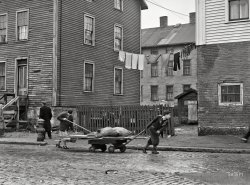
MAY CONTAIN NUTS

Search Shorpy
SHORPY ART

Framed or unframed, desk size to sofa size, printed by us in Arizona and Alabama since 2007. Explore now.
Join and Share
Ad-Free Shorpy
Shorpy is funded by you. Patreon contributors get an ad-free experience.
Learn more.

Recent comments
- Baldwin 62303
- Baldwin VO-1000
- Cold
- No expense spared
- Tough Guys
- Lost in Toyland
- And without gloves
- If I were a blindfolded time traveler
- Smoke Consumer Also Cooks
- Oh that stove!
- Possibly still there?
- What?!?
- $100 Reward
- Freeze Frame
- Texas Flyer wanted
- Just a Year Too Soon
- WWII -- Replacing men with women at the railroad crossing.
- Yes, Icing
- You kids drive me nuts!
- NOT An Easy Job
- I wonder
- Just add window boxes
- Icing Platform?
- Indiana Harbor Belt abides
- Freezing haze
- Corrections (for those who care)
- C&NW at Nelson
- Fallen Flags
- A dangerous job made worse
- Water Stop
Member Photos
The Shorpy
Print Emporium
Print Emporium
Search Shorpy
Search results -- 30 results per page
- Jurassic Park: 1942
- ... & North Western Railroad repair shops." Photo by Jack Delano. View full size.
I'm not entirely sure But, it looks ... Posted by Dave - 02/17/2014 - 5:20pm -
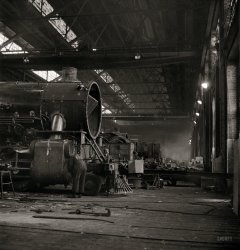
- For Them, Bombs: 1943
- ... Union Station train concourse." Medium-format negative by Jack Delano for the Office of War Information. View full size.
Still in use- ... Posted by Dave - 01/18/2014 - 8:20am -
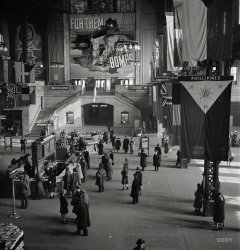
- Household Saints: 1941
- ... doll in one of the houses in a slum area." Photo by Jack Delano. View full size.
Divine Comedy by Dante Aleghieri The ... Posted by Dave - 03/06/2019 - 4:03pm -
![Household Saints: 1941 December 1941. "Charlotte Amalie, Saint Thomas Island, Virgin Islands. A colored doll in one of the houses in a slum area." Photo by Jack Delano. View full size.
Divine Comedy by Dante AleghieriThe narrative describes Dante's travels through Hell, Purgatory, and Paradise or Heaven, while allegorically the poem represents the soul's journey toward God.
Time is two-facedInteresting that they have two clocks that are almost identical. Wonder if they are parting out one to fix the other, or if they repair clocks to supplement their income.
Of course we recognize FDR, but who is the other person? The VP, or the local governor perhaps?
[Might the name under his likeness hold a clue? - Dave]
Yes, I saw the name, but needed my glasses (and a peek around the frame to make out "For Vice President." Thanks for pointing me in the right direction, Dave.
Endearing and a bit Creepy I do like how the doll seems to be lovingly gazing at the photos above. However, a random doll perched as a prop, is a bit odd, and creepy to me, but certainly interesting. The fact that I even suggested that a doll was gazing is also a bit odd to me as well.
I also wonder why the "curvy" clock has the face outside, and a coffin door? It seems very out of the ordinary for the time, and shapes presented. I am however curious as of where it is now.
The woodwork on the shelf above is very bad, and I love it. That shows a lot of initiative, and goes to show that we are capable of so much outside of our general studies. The answer so often heard is, "I don't know how to do that". Well, step up to the plate and learn. That's how you evolve. I give this person much credit for finishing the project and hopefully improving their skills moving forward.
[Thank God you're here to guide us. - Dave]
DST ClockObviously. It's sprung forward.
A chief Petty Officer ... ... a bust of Dante, a print of Breton's "The Song of the Lark", a wonderful old clock, nicely polished furniture: this is a family with pride and expectations, even as the photographer describes them as slum-dwellers. Hope they all lived long and prospered.
Dante and BeatriceI found this on Google images. The Dante bust is a bookend usually matched with another one of Beatrice. You can buy them on eBay. Beatrice was a pretty young lady that Dante admired from afar and who inspired some of his writings.
Where's Beatrice?Bookends.
(The Gallery, Jack Delano, Public Figures)](https://www.shorpy.com/files/images/SHORPY-8c08138a.thumbnail.jpg)
- Pensativo: 1942
- ... who was playing in the street." Medium format negative by Jack Delano. View full size.
Nice looking kid He looks very modern.
... Posted by Dave - 03/10/2019 - 8:28pm -

- Air Noir: 1943
- ... after having worn it all day." Medium-format negative by Jack Delano for the Office of War Information. View full size.
Unusual ... Posted by Dave - 12/05/2016 - 8:30pm -
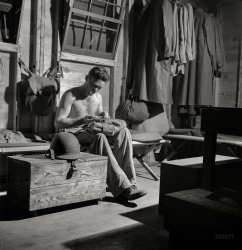
- Hey Kids: 1941
- ... Castleton, Vermont." Medium format acetate negative by Jack Delano for the Farm Security Administration. View full size.
Striped ... three boys wearing them.
(The Gallery, Agriculture, Jack Delano, Kids, Rural America) ... Posted by Dave - 11/05/2019 - 9:38am -
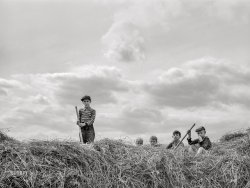
- Cash Grocery: 1940
- ... County, North Carolina." Medium format negative by Jack Delano for the Farm Security Administration. View full size.
Nice Chevy ... Posted by Dave - 03/31/2019 - 4:56pm -
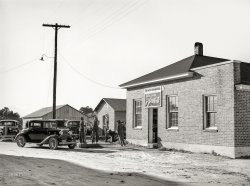
- Christiansted: 1941
- ... Croix, Virgin Islands." 35mm Kodachrome transparency by Jack Delano for the FSA. View full size.
(The Gallery, Jack Delano) ... Posted by Dave - 05/08/2008 - 10:03am -
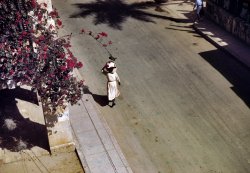
- Rural Customs: 1942
- ... at the school." You betcha! Medium format negative by Jack Delano, Office of War Information. View full size.
Teaching Wisconsin ... Posted by Dave - 12/03/2013 - 4:45pm -
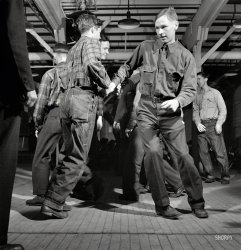
- Manny Christmas: 1940
- ... figures of Mary, Joseph and Geronimo. Acetate negative by Jack Delano. View full size.
Decorations Mary and Joseph and the baby ... Posted by Dave - 11/27/2018 - 1:22pm -

- The Hump Office: 1942
- ... railroad yard, Chicago." 4x5 Kodachrome transparency by Jack Delano for the Office of War Information. View full size.
The List - ... Posted by Dave - 01/16/2014 - 6:12pm -
![The Hump Office: 1942 December 1942. "Switch lists coming in by teletype to the hump office at a Chicago & North Western railroad yard, Chicago." 4x5 Kodachrome transparency by Jack Delano for the Office of War Information. View full size.
The List - Railroad Abbreviations?I can figure out some of the abbreviations in the left column as railroads: SFE = Santa Fe, RDG = Reading, PA = Pennsylvania, NYC = New York Central, RI = Rock Island, MIL = Milwaukee Road. Maybe someone out there can figure out the others: CIM, MP, EJE, COFG, GCX, UTLX, CNW, MDT. I also think the ones in the center column are abbreviations (BELT, PENNA, IHB, IHLOC, CBQ), but of railroads or cities?
20 Years Later...in 1962, a similarly attired C+O clerk, leaning back in a swivel chair, feet up on the console of the Univac 1 at Case Tech, watching the neon lights blink and the metal tapes spin.
C+O's corporate offices were in the Terminal Tower, and a clerk came out to Case every day to run accounting jobs. This was the only use the Univac 1 got at the time, with the Burroughs 220 and the new Univac 1107 taking over student class load.
My phone has more computing power than all of them put together.
Could it be?General MacArthur above the pictured man's head?
[Good catch! Time magazine, December 29, 1941. -tterrace]
The ListClick to enlarge.
Railroad AbbreviationsCIM = Chicago, Illinois, and Midland
MP = Missouri Pacific
EJE = Elgin, Joliet, and Eastern
COFG = Central of Georgia
GCX = General Chemical
UTLX = Union Tank Car Co.
CNW = Chicago & Northwestern
MDT = Merchants Despatch Transportation
Full disclosure: Other than CNW, I had to rely on the magic of the interwebs.
Hump listThe list most likely represents train 284 out of Butler Yard (Milwaukee, Wisconsin) on the Wisconsin Division, with conductor GL Stewart in charge. The 1, 2, 3...designation indicates the first car to go over the hump, the second, etc.
I find in interesting that the official reporting marks of the various railroads are not used. Regarding bigguy1960’s question: CIM represents the Chicago and Illinois Midland railroad. MP represents the Missouri Pacific railroad, often called the Mopac. EJE represents the Elgin Joliet and Eastern railroad, owned by US Steel at the time to handle their product. MDT stood for Merchants Despatch (the “e” is correct) Transportation. CNW was the Chicago and Northwestern railroad, the host railroad for the picture. The X designation in a reporting mark meant the rail equipment was owned by a company other than a railroad. Hence, UTLX refers to the Union Tank Car Company, still with us today.
The “COFG” and “GCX” have me stumped.
The two character designation to the right of the initial/number represents load or empty, and car type. X stands for empty, thus CIM 5449 is an empty “gon,” or gondola. Lines three and four are empty hoppers. Lines 14, 15, 16, 20, 21, 22 and 23 are loads, with a brief description of the lading.
The next block of information indicates which railroad in Chicago the car goes to. The line one through six block will go to the BRC, the Belt Railroad of Chicago. The handwritten twos and sixes are for the pin puller on the hump. He will see a block of six cars and pull the pin “behind six,” instead of scrutinizing each car reporting mark and number.
The two digit number to the right of the off going line represents the cars weight, critically important to the retarder operator. A couple of the cars show “10” tons, and I’m assuming they are wooden sided gons, which would account for their very light relative weight.
Let's dissect a switch listThe very top of the page shows the train's origin and date.
1. The left column is the position number of the car in the train followed by the car initials and number. The double letter indicates car type, i.e.XG, gondola; XM, boxcar, etc.
2. The next column lists the car destination as far as this yard is concerned. Belt would be Belt Railway of Chicago; IHB is Indiana Harbor Belt, with initials after indicating IHB's connecting destination, for instance CBQ is Burlington Route. Most of this train is being delivered to C&NW's connecting railroads in the neighborhood.
3.Third column of typed numbers is the track number the car is headed for. The hand written number shows multiple car cuts. To the right of the track numbers is any special notations or instructions. It looks like "Ride" is the big note, meaning the car should be ridden by a trainman off the hump, to slow the car to prevent damage to lading.
In this time, most humps employed "hump riders", trainmen who controlled speed of cars as they rolled into the tracks by gravity after being uncoupled in motion.
Early in my career, only the yard conductor got a nice printout like this. He would scribble out a simple switchlist for his trainmen that only listed how many cars to which track number. The conductor was the only one who had car numbers to work with; if he missed an extra car, or a car missing, all the work beyond that was wrong and had to be straightened out. (Most guys were careful about that.)
Couple more abbr.BELT = Beltline RR (Chicago local freight)
CBQ = Chicago Burlington & Quincy (Burlington route)
Those Initials and moreCOFG = Central of Georgia (Railroad)
GCX = General Chemical (Company)
WAB - Wabash (Railroad)
The Belt (Railway Company of Chicago) gets all of its empty Railroad owned cars on the same Track 28, but the PENNA (Pennsylvania Railroad) gets its empty PA (Pennsylvania Railroad) cars on Track 10 and an empty RDG (Reading Railroad) car on Track 9.
Thanks, SHORPYAnother learning experience thanks to your superb members.
(The Gallery, Kodachromes, Chicago, Jack Delano, Railroads)](https://www.shorpy.com/files/images/SHORPY_1a34624u.thumbnail.jpg)
- Former Slave: 1941
- ... her house near Greensboro, Alabama." Nitrate negative by Jack Delano for the Farm Security Administration. View full size.
A Living ... Posted by Dave - 04/12/2018 - 7:42pm -
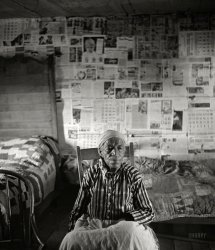
- Curiosity Shop: 1941
- ... Islands. Along the main street." Medium format negative by Jack Delano. View full size.
Diamonds are a town's best friend I ... Posted by Dave - 03/15/2019 - 12:07pm -
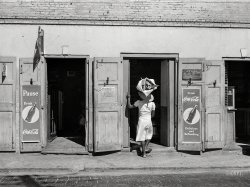
- The Railyard: 1942
- ... Illinois Central railroad yard." Medium-format negative by Jack Delano for the Office of War Information. View full size.
watch your ... Posted by Dave - 01/02/2014 - 8:47pm -
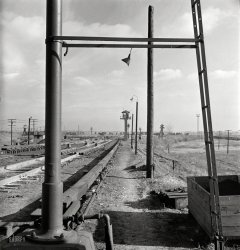
- Box Lunch: 1941
- ... at the mills nearby." Medium format acetate negative by Jack Delano for the Farm Security Administration. View full size.
Italian ... Posted by Dave - 11/24/2018 - 10:53am -
![Box Lunch: 1941 January 1941. Andover, Massachusetts. "One of the sons of Anthony Forgetta, Italian vegetable farmer, feeding the horse after coming home from school. Mr. Forgetta and a daughter work at the mills nearby." Medium format acetate negative by Jack Delano for the Farm Security Administration. View full size.
Italian vegetablesWhich ones did they grow in Andover?
[Zucchini, broccoli, radicchio and pinocchio. - Dave]
(The Gallery, Horses, Jack Delano)](https://www.shorpy.com/files/images/SHORPY-8c04275a1.thumbnail.jpg)
- Onward & Upward: 1941
- ... ended up on the wrong track. Medium format negative by Jack Delano. View full size.
Situation Hopeless, But Not Serious Five ... Posted by Dave - 01/18/2019 - 10:39am -
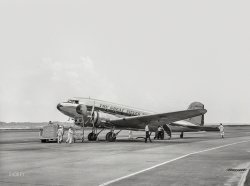
- Happy Thought: 1940
- ... near Erin, New York." Medium format acetate negative by Jack Delano for the Farm Security Administration. View full size.
Lots of ... Posted by Dave - 12/19/2018 - 12:41pm -
![Happy Thought: 1940 September 1940. "Mrs. Garland and her little boy. Family lives in the submarginal farm area of Rumsey Hill, near Erin, New York." Medium format acetate negative by Jack Delano for the Farm Security Administration. View full size.
Lots of PotsThat stove looks huge and can accommodate so many pots but I guess once you made the fire, you had to cook everything at once instead of making things one after another. Perhaps she had a large family (or planned to) and this was a wise purchase.
Another thought -- during harvest season my grandparents would hire threshers to come in and harvest everything in a short period of time. The farm wife was responsible for feeding them. This probably came in handy if used for those times too.
Shoe problemMr. Delano must have shown up when no one was ready. Maybe scurrying around to get their shoes on. The little boy either didn’t get both shoe on on decided he didn’t want to wear two shoes. Mother simply didn’t have time to tie her shoes, I suppose. Anyway, that is quite a remarkable stove!
[That's a baby shoe. Our young lad has both shoes on. - Dave]
Threshing, heat, and canningThat big stove is probably for a bunch of reasons, starting with the fact it was probably a main source of heat for the home. It also would come in handy for not only threshing season, but also canning, preserving, boiling down maple syrup, baking bread & pies, and even heating water for doing laundry. It's impressive how much oven you can use when you're doing all that.
Close your mouth, you'll catch a fly.That's what my old dad would tell me when my mouth was hanging open like this young lad's.
Give me gas (stove that is)The stove was a critical appliance. My family were from the anthracite region in northeastern Pennsylvania. My aunt had a coal stove. It had to be kept burning all year round. It was a pain to re-light so extended trips from home were few. In addition to cooking, it was the primary source of heat and hot water. There were metal grates in the floors upstairs to let the heat rise up in the winter. For really cold days she had a second coal heater in the "parlor," as she called it. She had this setup until she had to move into a "home."
Maybe the result of living through the Depression, but my family never updated anything without good reason. Things were used until they broke and couldn't be repaired.
Shorpy StoveNice placement.
The Stove That Made Pittston FamousFounded in 1869, the Pittston Stove Company's business took off after 1873, when Samuel Smythe, an engineering pioneer with 25 patents, designed a duplex grate, which became an industry standard.
The company shipped $175,000 worth of stoves in 1917, the equivalent of $3.2 million today. The one shown in this ad has much fancier ironwork but the components are similar the Garland family's version.
Re: Give me gas (stove that is) I have had many conversations as a curious teen, and even more curious adult with my grandparents, as well as my husband's Indiana farmer grandparents of German farm family roots over the last 40 years. In those conversations, I discovered that due to not only the Great Depression, but general farm family economics, combining a lifetime of thrifty farming ways, plus the aforementioned Depression, AND WWII, they just lived that way, because that's the way things were. While "the men" - meaning the grandfather and any uncles that remained to follow in their father's footsteps - ruled the roost regarding not only farm operations, but economic ones as well. Grandmothers - mothers at that time, of course - ruled the home, and all operations taking place inside it, but only to the point where the economy would allow. The furnishing of the kitchen, the sewing room, the canning storage, water supply, and other utilities were ruled by the amount of money available coming from the economies of the farm operations, which always came first. If electricity were to be furnished to the property, it came to benefit the running of the farm first, and then the house IF there was enough left over to do so. So, the harder the men worked, and the more money that came from those efforts, the more everyone would benefit. Updating the features of the farm home was practically impossible not only during depression times, as there was no money to do so, until the Federal government and the FSA began getting involved in helping farm families pull themselves out of the Great mire they found themselves buried in during the very late thirties.
But, it all came to a halt during the War years, because even though there was more money in the bank finally, there was little to nothing to buy! Restrictions, rationing and priorities on metals reduced new farm equipment to absolute minimums, if not down to nothing to be had at all. Even repair parts were almost impossible to come by. Same for tractor tires, truck tires, wagon tires, even bicycle tires! So many farm families lived miles and miles "from town" they had difficulty getting there to buy anything, if there was anything to buy. Going to the local co-op for seed, feed, and fertilizers - also difficult to get in needed quantities - was about as close to shopping as many farmers or their wives would get for years.
My husband's grandmother never learned to drive, and she was relegated to sending a list with grandpa to get the things she needed, so she had to depend on him entirely for several years to get her shopping done. The only time she left the house for years was to go to church down the road about two miles on Sunday mornings. Sometimes she would be able to send mail orders in from her Sears catalogs, if they had what she wanted for the money she had to spend. She had three sons and one daughter, born in a period of 36 months from the birth of the first to the last, all by C-sections, in the mid-30's, so those trips to the hospital were also rare outings! And extended rests, with other local church acquaintance farm wives coming to help her out for the first few weeks after each one came. Cloth diapers were washed daily in a bucket, rinsed twice in the wash tub, run through the wringer, and hung on the line in the sun to dry. Laundry wasn't just a Monday only job, with farmer's overalls getting filthy on a daily basis. Nobody had a week's worth of clothing to get from Monday to Sunday.
Gasoline restrictions and rationing certainly didn't help that, as you didn't get far on three gallons per week. Gasoline meant for farm equipment only had been colored with a red dye, and if you were found to be running farm gas in your automobile, there was severe fines that could be levied. So, keeping things running, and fixing instead of replacing were the rules of the day all during the War years as well. Once all those restrictions, rationing, priorities, etc., were over with, it wasn't so easy to just start throwing things out and buying new. Not when you had been doing things that way practically all your life.
Mrs. Helen Struble Garland, age 31This is most likely Helen Garland and her 3-year old son Chauncey. Per the 1940 census, Helen lived with her husband Clarence and five young sons in Van Etten, NY, where her husband worked as a woodcutter. Helen and Clarence both lived into their eighties.
(The Gallery, Jack Delano, Kids, Kitchens etc., Rural America)](https://www.shorpy.com/files/images/SHORPY-8c03149a.thumbnail.jpg)
- Lightheaded Bros: 1940
- ... Farmers Co-op in Du Bois." Medium format negative by Jack Delano for the Farm Security Administration. View full size.
Possible ... Posted by Dave - 05/04/2019 - 10:29pm -
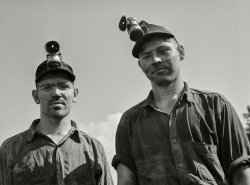
- Sick Kicks: 1940
- ... the grading station at Belcross, North Carolina." Photo by Jack Delano for the Farm Security Administration. View full size.
Time ... Posted by Dave - 10/31/2018 - 7:09pm -
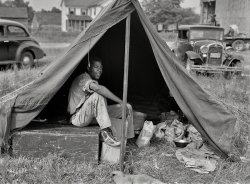
- Steel Wheels: 1942
- ... shops at an Illinois Central Railroad yard." Photo by Jack Delano, Office of War Information. View full size.
wheel shop This ... Posted by Dave - 10/28/2013 - 11:31am -
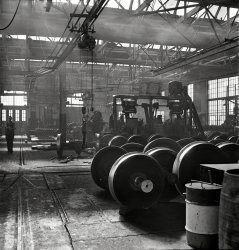
- The Tubularity: 1940
- ... Whitney plant. East Hartford, Conn." Nitrate negative by Jack Delano. View full size.
Keep em' Flying Dave: As a senior at ... Posted by Dave - 05/11/2016 - 1:21pm -
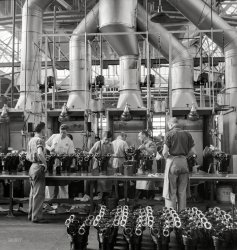
- Step Children: 1941
- ... FSA client of Guilford, Vermont." Acetate negative by Jack Delano for the Farm Security Administration. View full size.
The kids ... Posted by Dave - 11/10/2019 - 2:24pm -
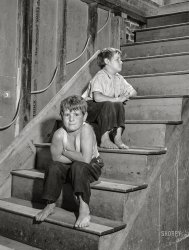
- Cozy Depot: 1943
- ... thaw out his frozen air hose." Medium-format negative by Jack Delano for the Office of War Information. View full size.
(The Gallery, ... Posted by Dave - 01/08/2014 - 10:29am -
![Cozy Depot: 1943 January 1943. "Freight train operations on the Chicago & North Western Railroad between Chicago and Clinton, Iowa. At the end of the trip, conductor John Wolfsmith [last seen here] waits at the little railroad station for a suburban train to take him back home to Chicago. A welder who works at the rip tracks is trying to thaw out his frozen air hose." Medium-format negative by Jack Delano for the Office of War Information. View full size.
(The Gallery, Jack Delano, Railroads)](https://www.shorpy.com/files/images/SHORPY_8d24470a.thumbnail.jpg)
- Slagpile Sluggers: 1940
- ... for children with slagpile in background." Photo by Jack Delano, Office of War Information. View full size.
Shale finds ... Posted by Dave - 02/09/2018 - 12:08am -
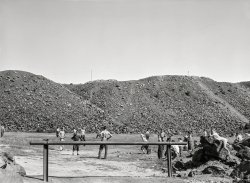
- Harvest Home: 1940
- ... grading and canning." Medium format acetate negative by Jack Delano for the Farm Security Administration. View full size.
Good for ... Posted by Dave - 10/31/2018 - 1:59pm -
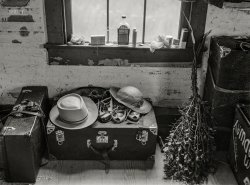
- Field of Wheels: 1942
- ... Central Railroad yard." Medium-format nitrate negative by Jack Delano for the Office of War Information. View full size.
Round and ... Posted by Dave - 02/04/2016 - 9:54pm -
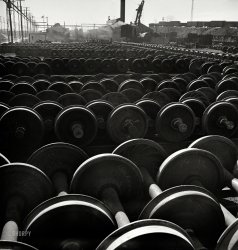
- Unlikely Suspects: 1941
- ... Bragg, North Carolina." Medium format acetate negative by Jack Delano. View full size.
The New Exhibit This reminds me of a ... Posted by Dave - 11/29/2018 - 12:20pm -
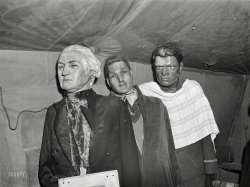
- Pittsburgh Poors: 1941
- ... Pennsylvania." Medium format acetate negative by Jack Delano for the Farm Security Administration. View full size.
(The ... Posted by Dave - 11/05/2019 - 1:04pm -
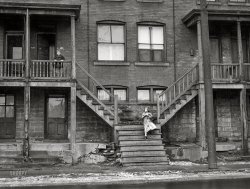
- Brakeman Capsey: 1943
- ... New Mexico, waits on a siding." Medium-format negative by Jack Delano for the Office of War Information. View full size.
Jordan ... Posted by Dave - 02/11/2014 - 11:29am -
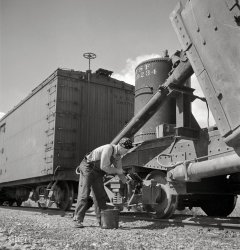
- Woody Wagon: 1941
- ... home some salvaged firewood in a slum area." Photo by Jack Delano. View full size.
Studs and Spuds? There's definitely wood on ... Posted by Dave - 11/24/2018 - 11:43am -
